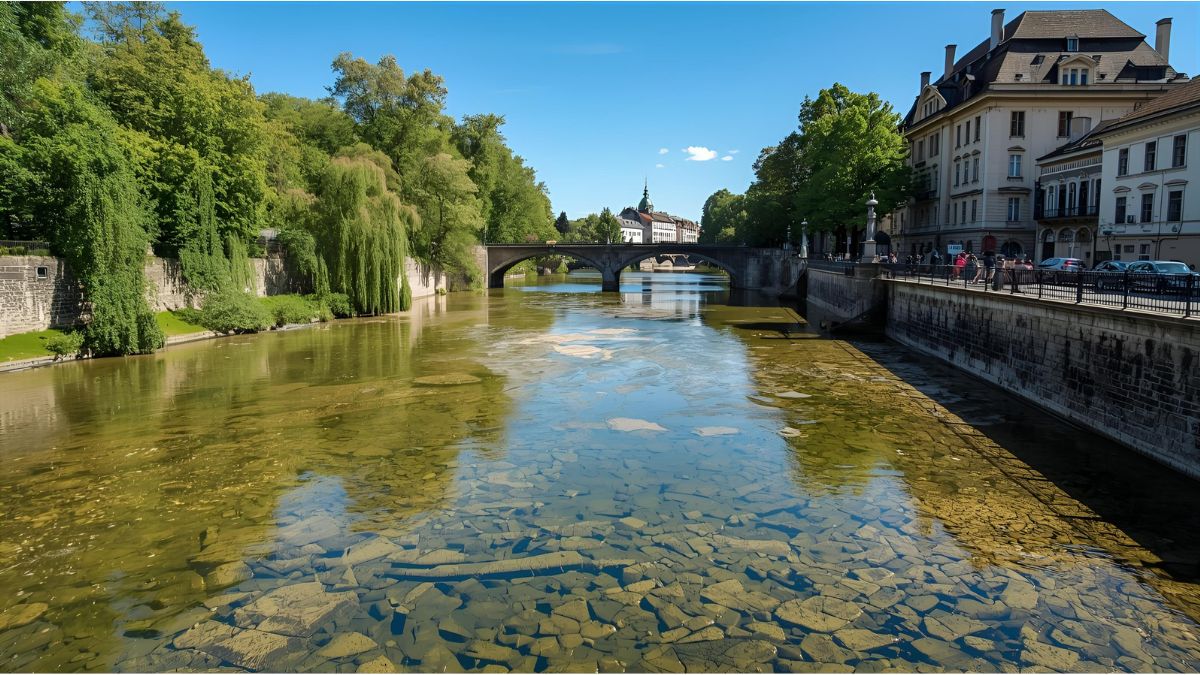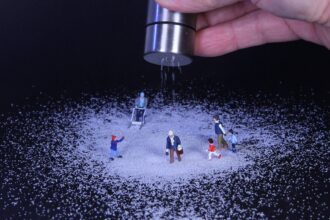Visitors strolling along Munich’s Praterinsel this week may have noticed something unusual: the Isar River is running lower than usual.
According to the city’s construction department (Baureferat), the reduced water level is intentional — part of the regular riverbed cleaning process known as “Bachauskehr.”
What is the “Bachauskehr”?
Once or twice a year, usually in spring or autumn, the city lowers certain sections of the Isar and its side channels to clear sediment, debris, and overgrown vegetation from the riverbed.
This “river sweep” helps improve water quality, fish habitats, and the overall ecological balance of Munich’s waterways.
“Deposits and uncontrolled growth burden the aquatic ecosystem and reduce water quality,” city officials explained.
By temporarily draining the channels, maintenance crews can also inspect embankments, dams, and bridge foundations for damage that would normally be hidden beneath the water surface.
Which areas are affected
The current cleaning operation focuses on the “Große Isar”, the section of the river flowing between the western riverbank, Museumsinsel, Wehrsteg, and Praterinsel.
It also includes the Fabrikbach, which branches off near St. Lukas Church, and extends to connected streams such as the Eisbach and Schwabinger Bach.
To carry out the work, the city has: Opened the Praterwehr and the Lukaskirche weir, allowing water to drain;
Closed the inflow to the Fabrikbach; Organized fish relocation by licensed anglers, who catch and move larger fish to safe habitats before cleaning begins.
“Gentle” cleaning protects wildlife
The city emphasizes that the Isar is not being completely drained. Instead, the Baureferat performs a “gentle Bachauskehr”, maintaining a minimal flow of water to protect aquatic life.
Specialists from environmental and conservation departments supervise and document all measures. Larger fish are safely transferred to nearby waters, while smaller species remain protected by maintaining sufficient residual water.
Surfers face a short break at the Eisbach wave
One visible consequence of the lowered water level: Munich’s famous Eisbach wave — a hotspot for urban surfing — is temporarily closed.
As the city explains, surfing is not possible during the maintenance phase, because the reduced flow rate prevents the formation of the stable wave.
The good news for surfers: the temporary measure is brief. The cleaning began last weekend and will continue until October 31. Surfing is expected to resume immediately afterward, once normal flow levels return.
Why the maintenance happens now
According to the city, autumn is an ideal time for the Bachauskehr: temperatures are mild enough that the water doesn’t freeze, yet cool enough to avoid overheating and stressing aquatic life.
These scheduled cleanings are a key part of Munich’s river management strategy, ensuring the Isar remains a healthy, accessible, and scenic waterway in the heart of the city.
A tradition of care for the Isar
Munich’s relationship with the Isar goes beyond infrastructure — the river is part of the city’s identity. Regular maintenance like this keeps the Isar clean, safe, and ecologically balanced, preserving the charm of one of Germany’s most beloved urban rivers.









